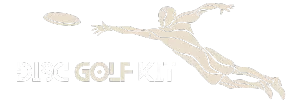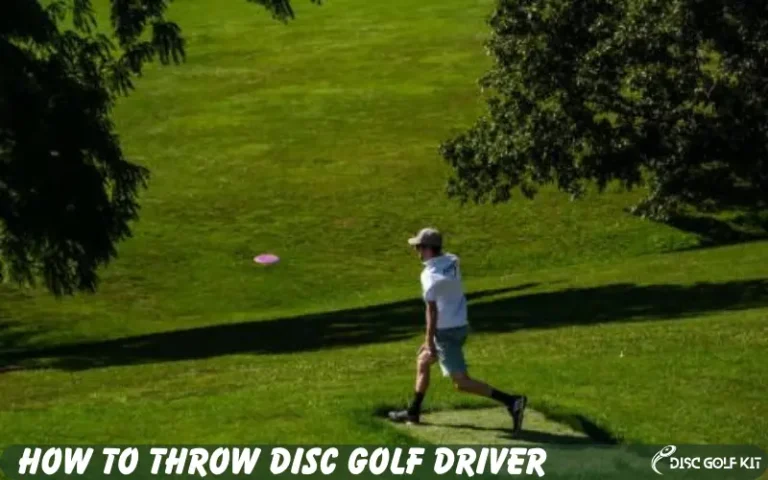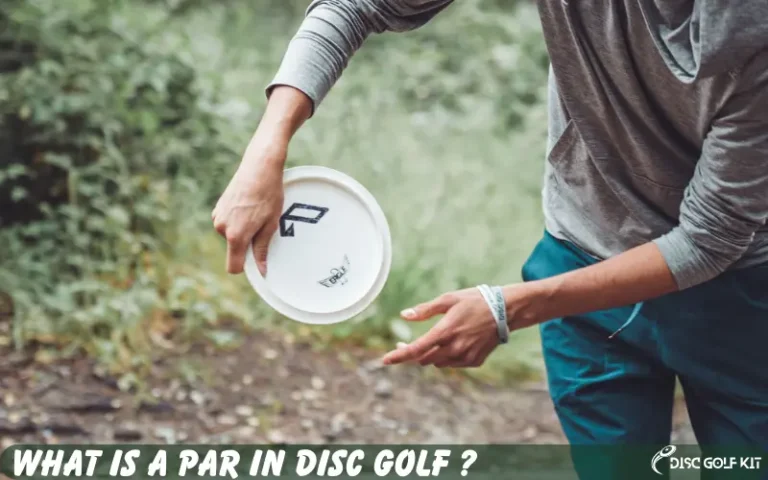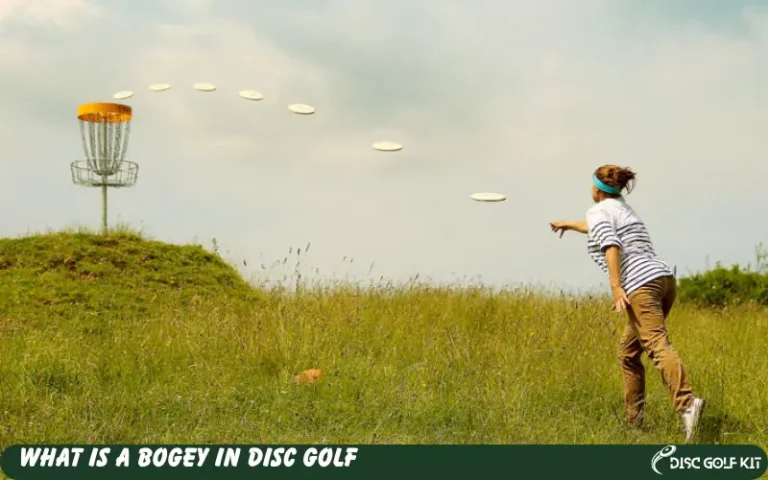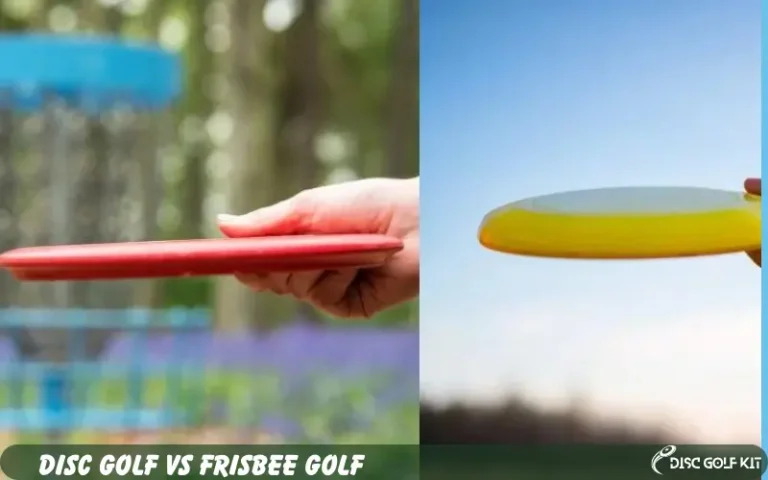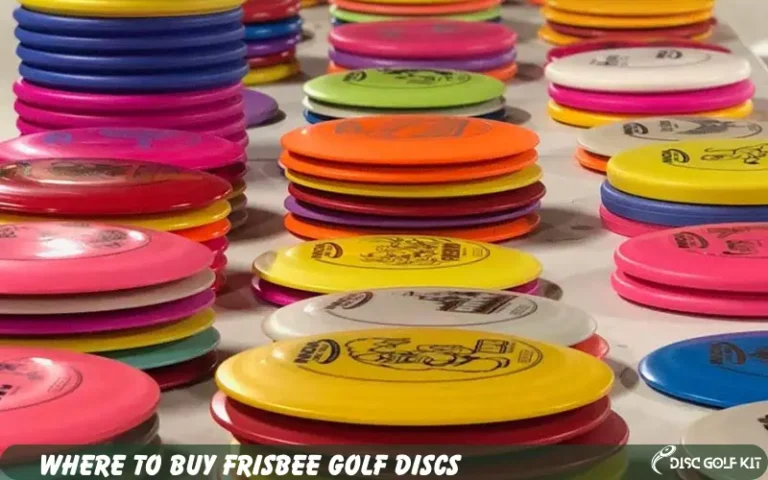
Disc golf is a thrilling sport that combines elements of frisbee and golf. Players aim to complete a course in the fewest number of throws, navigating through a series of holes marked by baskets. Like in traditional golf, each hole has a designated “par,” which sets the expected number of throws it should take to complete.
Understanding the specific Disc Golf Terms related to disc golf is vital for both beginners and seasoned players. The terminology helps you understand the rules of the game and elevates your strategy and engagement with other players. Whether you’re talking about “birdies” and “bogeys” or discussing more advanced throws like “hyzer” and “anhyzers,” knowing the jargon will enrich your gameplay.
This comprehensive guide will dive deep into disc golf terms, focusing on various aspects, including basic disc golf terms, specialized scoring terms, and advanced jargon. So, whether you’re new to the game or looking to brush up on your disc golf lexicon, this article covers you. Stay tuned!

Basic Disc Golf Terms
Following are basic terms in disc golf.
Tee
In disc golf, your journey for each hole begins at the tee. This is the designated starting area where players make their first throw. Generally, tees are marked with signs that provide information about the hole, such as distance and par. Understanding the tee’s location and layout can offer a strategic advantage, helping you decide which type of throw or disc to use for your initial shot.
Fairway
Once you’ve made your first throw from the tee, your disc will ideally land on the fairway. This is where most of the gameplay occurs between the starting point and the basket. The fairway can have various terrains—open fields, wooded areas, or water hazards. Navigating the fairway successfully is crucial for setting yourself up for easier subsequent throws and, ultimately, reaching the basket with fewer strokes.
Basket
The basket is your end goal in disc golf. It’s a metal basket with hanging chains designed to catch the disc. You’ve completed the hole once your disc is safely in the basket. Baskets are usually raised about two feet off the ground and are the focal points of each hole. Successfully aiming your disc into the basket requires a mix of skill, precision, and sometimes a bit of luck.
Par
The concept of “par” in disc golf is similar to traditional golf. The predetermined number of throws is expected for players to get their disc from the tee into the basket. Par is a benchmark, allowing players to measure their performance on each hole. Scoring terms like “birdie” and “bogey,” which we will discuss later, are derived based on how your actual number of throws compares to the par.
Understanding these basic disc golf terms lays the foundation for playing the game and appreciating its nuances and strategies. As you get more immersed in the sport, you’ll find that these disc golf terms are just the tip of the iceberg.
Disc Golf Scoring Terms
Following are scoring terms in disc golf.
Birdie
A “Birdie” is a term you’ll love hearing on the disc golf course. It means you’ve completed a hole in one stroke fewer than the designated par. Achieving a birdie is a sign of skill and precision, often bringing a sense of accomplishment and boosting your overall score.
Bogey
Conversely, a “Bogey” means you’ve completed a hole in one stroke more than the par. While it’s a term most players prefer to avoid, bogeys are a part of the learning curve. Understanding the factors that led to a bogey can offer valuable insights for improvement.
Eagle
An “Eagle” is a rare and impressive feat, indicating you’ve completed a hole in two strokes fewer than the designated par. Eagles are often seen on longer gaps where expert throws can significantly impact the score.
Ace
An “Ace” is the disc golf equivalent of a hole-in-one in traditional golf. It means you’ve thrown your disc directly into the basket from the tee. Aces are incredibly rare but highly celebrated achievements that demand both skill and a bit of luck.
Double Bogey
A “Double Bogey” occurs when you complete a hole in two strokes more than the par. Double bogeys can be discouraging, but they also serve as learning experiences. Examining what went wrong can help you devise strategies to avoid them in the future.
Mastering the lingo of disc golf scoring terms can significantly enrich your gameplay. Not only do these disc golf terms provide a standardized way to discuss and compare scores, but they also add a layer of strategy and excitement to each round. Knowing what each term means and striving for birdies and eagles while avoiding bogeys and double bogeys can make each game a thrilling experience.
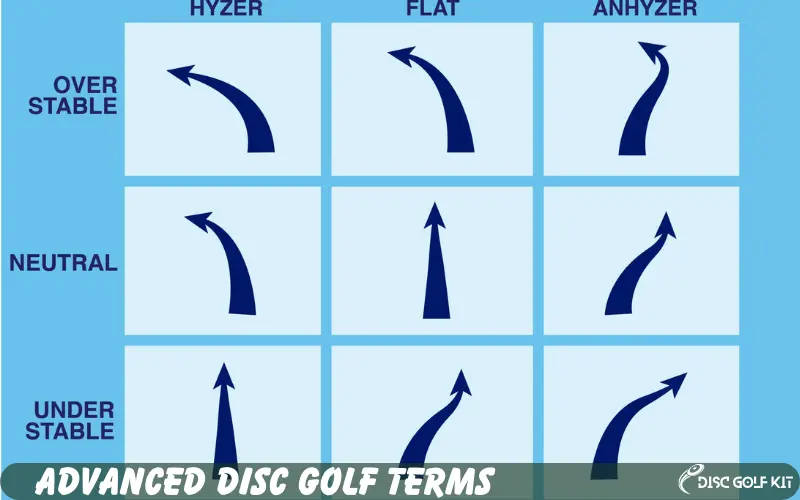
Advanced Disc Golf Terms
These are Advanced Disc Golf Terms.
Hyzer
The term “Hyzer” refers to a specialized throw that, for right-handed players, curves to the left as it flies. This is achieved by angling the disc’s outer edge downward at the time of release. Hyzers are essential for navigating obstacles or setting yourself up for a better position on the fairway.
Anhyzer
Conversely, an “Anhyzer” is a throw that curves to the right for right-handed players. This is accomplished by tilting the disc’s outer edge upward when throwing. Anhyzers are helpful for similar reasons as hyzers but in the opposite direction, allowing for strategic placement of the disc on the course.
Roller
The “Roller” is a specialized throw where the disc is angled to hit the ground and then roll along it for an extended distance. This throw is beneficial for covering large distances or navigating under low-hanging branches and other obstacles.
Mando (Mandatory)
In some disc golf courses, you’ll encounter a “Mando,” short for mandatory. This is a designated obstacle or path your disc must navigate. Failing to pass the mando as required usually results in a penalty, often requiring the player to take an additional throw from a specified penalty area.
Understanding these advanced disc golf terms can provide a significant edge in competitive play. These terms encompass players’ various techniques and strategies to navigate complex courses effectively. Knowing these advanced disc golf terms will deepen your understanding and appreciation of the game, whether you’re watching a professional disc golf match or strategizing your gameplay.
Special Throws
Following are Special Throws in disc golf.
Hammer/Tomahawk
The “Hammer” and “Tomahawk” throws are specialized overhead techniques that involve gripping the disc similarly to a forehand grip but releasing it above your head. These throws can sail over obstacles and take unique flight paths, often making them useful when traditional throws won’t work. Though they require a bit of practice to master, these overhead throws can be game-changers.
Forehand/Flick
The “Forehand” or “Flick” is a side-arm throw that provides an alternative to the traditional backhand throw. It’s convenient for navigating obstacles to your right (for right-handed players) or left (for left-handed players). Mastering the forehand throw adds another tool to your disc golf arsenal, allowing for more versatile gameplay.
Unique throws like the Hammer, Tomahawk, and Forehand add complexity and excitement to disc golf. Learning these throws can not only be immensely satisfying but also strategically advantageous. These techniques enable players to navigate challenging course conditions and bring a flair of creativity to the game.
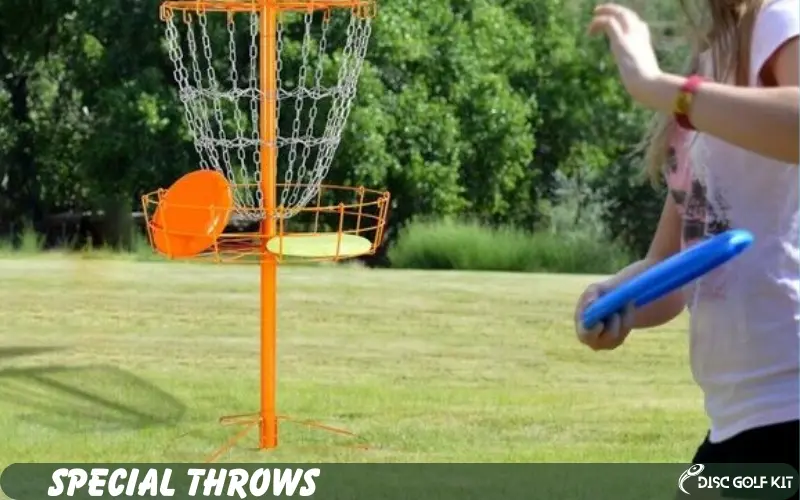
Disc Golf Scoring Formats
Here are some Disc Golf Scoring Formats .
Stroke Play
“Stroke Play” is the most commonly used scoring format in disc golf, mirroring the traditional golf system. In this format, the objective is to complete the entire course in the fewest number of throws. Each throw counts as a stroke; penalties can add extra strokes to your score. The winner is the player with the lowest total number of strokes at the end of the round.
Match Play
In “Match Play,” the game shifts to a hole-by-hole competition. Rather than tallying the total number of strokes, players aim to win individual holes by completing them in fewer throws than their opponents. You gain a point if you beat your opponent on a specific hole. The player with the most points at the end of the round is declared the winner.
Skins
The “Skins” format adds a unique twist to disc golf scoring. In this format, each hole is essentially a separate contest or “skin.” Players vie to win each hole, and if no one wins outright, the skin carries over to the next hole, increasing the stakes. This format often introduces a strategic element, as players might opt for riskier plays to capture accumulated skins.
Different scoring formats bring varied challenges and strategies to disc golf, making each game unique. Whether participating in a casual weekend game or a formal tournament, understanding these scoring formats can help you adapt your strategy and maximize your performance. The choice of scoring format can greatly influence gameplay, making each round a unique and engaging experience.
Terminology in Professional Disc Golf
Following are Terminology in Professional Disc Golf.
Professional Disc Golf Association
The “PDGA” stands for the Professional Disc Golf Association, which is the governing body for the sport of disc golf. The PDGA sets professional and amateur tournaments’ rules, standards, and guidelines. Being a member of the PDGA has many benefits, including eligibility to participate in sanctioned events and the opportunity to obtain an official player rating.
Rating
In professional disc golf, a “Rating” is a numerical representation of a player’s skill level. Calculated based on performance in PDGA-sanctioned events, the rating provides a standardized measure to compare players. Ratings range broadly, with higher numbers indicating better performance. This rating system allows for fair matchups and helps players track their improvement.
Being familiar with professional disc golf terminology like PDGA and Rating is essential for anyone serious about taking their game to the next level. These disc golf terms give you insight into the organized structure of the sport and help you understand how you stack up against other players in a competitive setting. Whether you’re aspiring to go pro or enjoy following professional disc golf, these terms offer a deeper understanding of the sport’s intricate landscape.

Tips on How to Improve Your Scoring
Knowledge is power, and in disc golf, understanding the terminology is critical to improving your scoring. Familiarizing yourself with essential to advanced disc golf terms can provide a significant edge, allowing you to make more informed decisions on the course. For example, knowing what a “Hyzer” or “Anhyzer” is can help you navigate obstacles effectively. Similarly, being aware of different scoring formats can alter your game strategy, allowing you to focus on what matters most—whether that’s each hole or the total number of strokes.
Practice Tips for Different Types of Throws
Improving your game isn’t just about understanding disc golf terms; it’s about applying them in practice. Here are some tips to help you improve different types of throws:
Remember, practice makes perfect. Dedicate time to master each type of throw, and consider recording yourself to analyze your form and make necessary adjustments. By combining theoretical knowledge with practical application, you’ll be well on your way to improving your disc golf scoring.
Conclusion
Understanding disc golf terms and scoring formats is crucial for anyone who takes the game seriously. Whether you’re a beginner or a seasoned player, familiarizing yourself with the language of disc golf can dramatically improve your strategic thinking and overall gameplay. From basic disc golf terms like “Tee” and “Fairway” to more advanced concepts like “Hyzer” and “Roller,” this vocabulary offers a framework to understand the game better and discuss it with fellow enthusiasts.
Now that you’re armed with this knowledge, the next step is to put it into practice. Knowing the disc golf terms is one thing; using them effectively on the course is another. So, grab your discs and head out to your local system. Whether striving for that elusive Ace or mastering the Hammer throw, continual practice will help you integrate these terms into your strategy and enhance your scoring capabilities.
So what are you waiting for? The course is calling, and now you’re better equipped than ever to take on its challenges. Happy throwing!
Frequently Asked Questions (FAQs)

Written by
Declan Hodgson
Meet Declan Hodgson, your disc golf sherpa at DiscGolfKit.com. Navigating the twists and turns of the sport, I’m here to guide you through the world of discs, gear, and the pursuit of that perfect throw.
